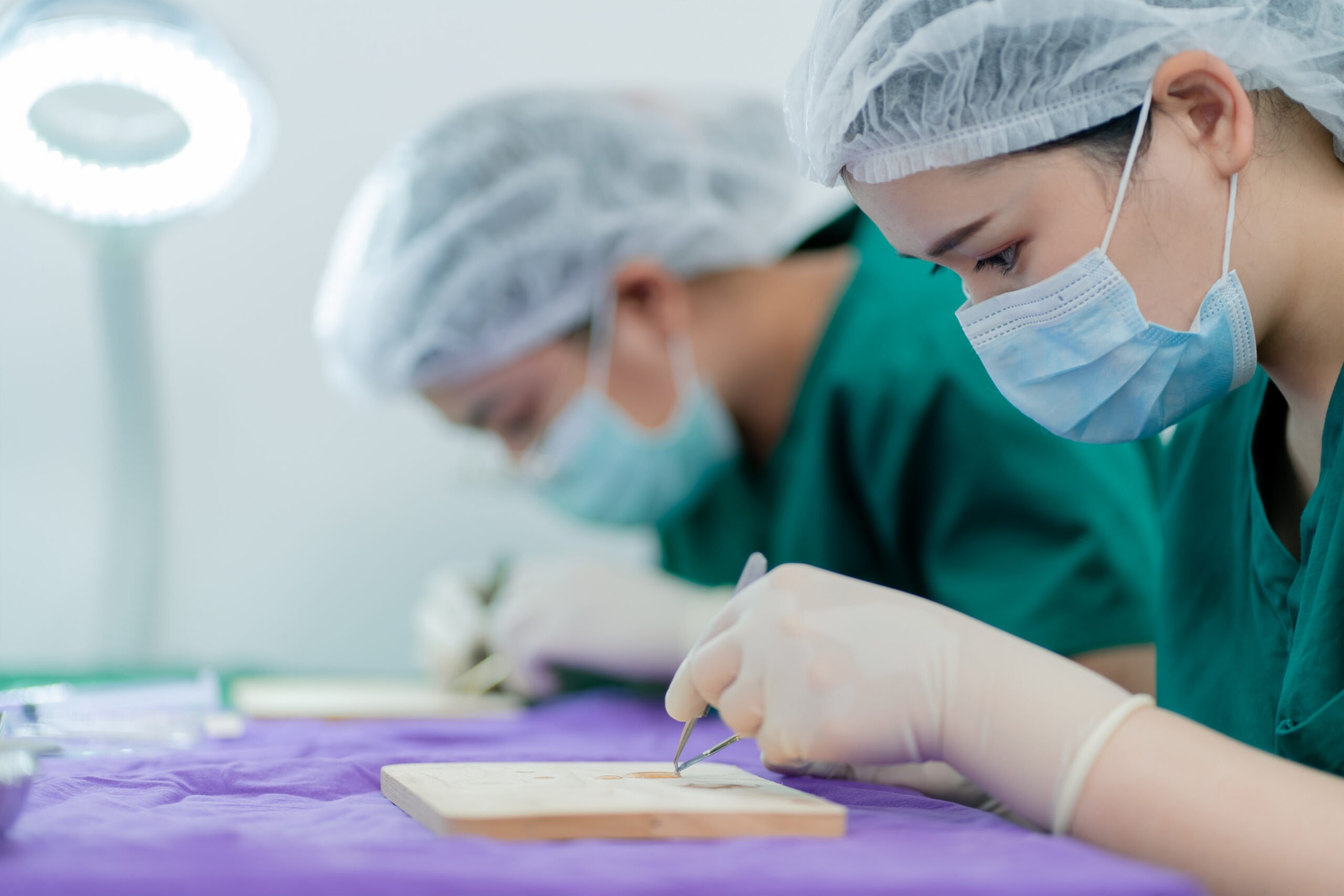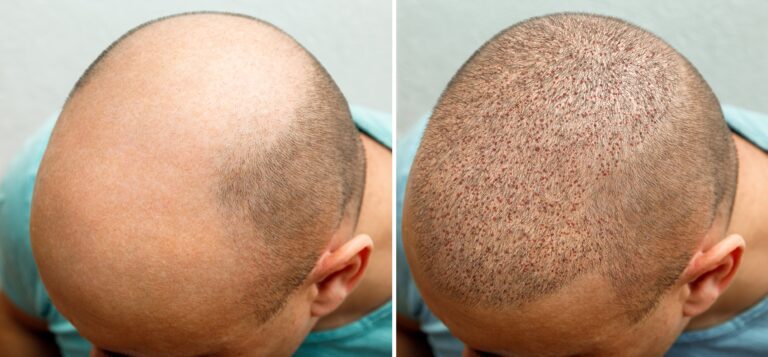How Do Hair Transplants Really Work? (Surgery Process Explained)
Hair loss is a worldwide problem that affects millions of men and women. Over 50 million men and 30 million women suffer from hair loss in the US alone.
That said, if you’re experiencing the same issue and are thinking about getting a hair transplant, it’s only natural to ask about its process.
So, how do hair transplants work?
In today’s article, we’ll be breaking down the surgical process of hair transplant. We’ll also discuss some pros and cons of both hair restoration procedures.
Methods of Hair Transplants
A hair transplant is a type of surgery that seeks to revitalize the hair production of a balding scalp or receding hairline. It’s a hair restoration technique that’s been around since the early 2000s.
During the procedure, the surgeon removes healthy follicles from a dense area of hair—usually the back of the head. They then replant the grafts into small incisions on the afflicted scalp area.
Currently, there are two predominant methods of hair transplantation that hair clinics use. These are the follicular unit transplantation and the follicular unit extraction methods.
Follicular Unit Transplantation (FUT)
In this process of hair transplant, the surgeon cuts a strip of your scalp skin containing healthy hair follicles. They then prepare the hair follicles in the strip for scalp insertion.
Here’s the procedure of a follicular unit transplantation surgery:
1. Prepping and Marking
Before the surgery, your surgeon will examine the donor and recipient sites. During this part, they’ll estimate the size of the skin strip and the number of hair grafts needed.
After surveying, the surgeon will redraw your hairline to guide them during the procedure. They’ll mark the donor area of your scalp as well.
2. Trimming and Numbing
Once they mark the donor and recipient areas, they’ll trim the hair at the donor site to about 1 to 2 millimeters. This step’s purpose is so they can handle it better during cutting.
After marking and trimming, they’ll start desensitizing your whole scalp. They’ll administer local anesthetic by injecting it in small doses throughout the scalp’s skin.
3. Cutting and Extracting
When the numbing agent kicks in, your surgeon will start cutting the donor strip using a scalpel. You’ll remain conscious during this part unless you opt to take a sedative beforehand.
A technician will process the patch of donor scalp skin. They’ll extract the individual hair follicles and prepare them for transplanting.
4. Implanting and Medicating
Before implanting the hair grafts, the surgeon will make small incisions resembling a regular hair pattern. Then, they insert the extracted hair follicles into the incisions to grow into new hair.
The whole FUT surgery could take 4 to 8 hours depending on the number of hair grafts needed. Once they insert all of the grafts into place, they’ll apply bandages with antibiotics on your head.
Follicular Unit Extraction (FUE)
This hair restoration technique uses a more straightforward approach. Instead of removing a strip of your skin, it directly extracts the hair follicle from your scalp.
Compared to FUT, follicular unit extraction is non-invasive. It’s a suture-less procedure and less likely to cause any scarring on your head.
Here’s how a hair surgeon performs a follicular unit extraction:
1. Shaving and Numbing
Before the surgery, your surgeon will examine your scalp for a potential donor site. Once located, they’ll shave the hair on the entire donation area as well as the receiving spot.
To ensure that you won’t feel any pain for the whole duration of the surgery, you can choose to receive local anesthetics. They’ll inject small doses of a numbing agent into your scalp.
2. Extracting and Cutting
After prepping and numbing your scalp, the surgeon will start harvesting the hair follicles from the donation area. They do this using a micro punch tool, also known as a micro-motor.
Once they have all the hair follicles they need, the surgeon will create a series of small incisions in a pattern resembling your normal hair. It ensures that the hair follicles fit in naturally when they grow on your scalp.
3. Transplanting and Medicating
When the incisions are ready, the surgeon will begin inserting the hair grafts into the cuts one by one. It’s a laborious process that needs meticulous care and accuracy.
Once all the hair follicles are in place, they’ll clean and bandage your head to heal. An FUE operation could take 8 to 12 hours from extracting to transplanting.
Follicular Unit Transplantation vs. Follicular Unit Extraction
Now that you know the surgical process of FUE and FUT, what’s the best method to choose for your hair transplant surgery?
Effectiveness
Both FUE and FUT are effective ways to combat hair loss. In fact, as long as it’s done by a reputable hair clinic, the success rate of both can reach over 95%.
You can expect to see some improvements to your hair in 6 to 12 months after surgery. It goes for both types of hair restoration procedures.
Cost
A single FUT operation can cost between $4,000 and $10,000. You should also consider the clinic’s location, post-surgery medication, and travel expenses.
On the other hand, FUE sessions can cost around $4,000 and $15,000. This price can go lower or higher depending on the clinic and the size of the area to cover.
Post-surgery Effects
Follicular unit extraction is the most popular method of the two. It’s because it’s safer, with little to no post-surgery effects, such as scarring or infection.
In FUT, there’s a higher risk of developing infection and other complications. Most importantly, its process will leave scars on the donor area where the surgeon extracted the hair grafts.
Final Thoughts
Hair transplant is indeed a cutting-edge technology. It allows patients who suffer from hair loss a chance to regain a new, beautiful crowning glory.
If you’re thinking of getting one yourself, it’s only natural to ask how do hair transplants work, or how is hair transplant done.
The procedure is actually straightforward. To revitalize your scalp’s hair production, they use FUT and FUE methods to implant healthy hair grafts on your balding scalp.







